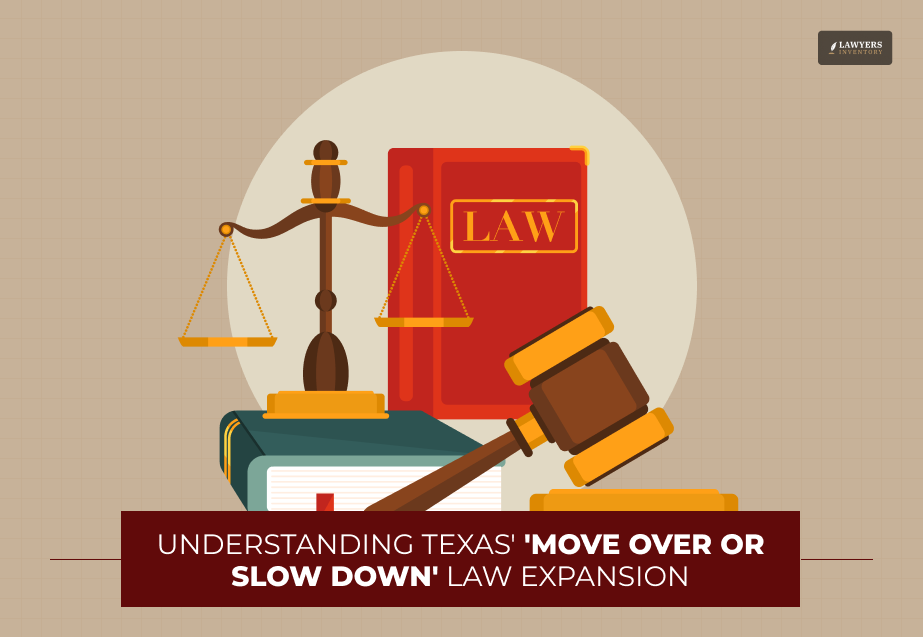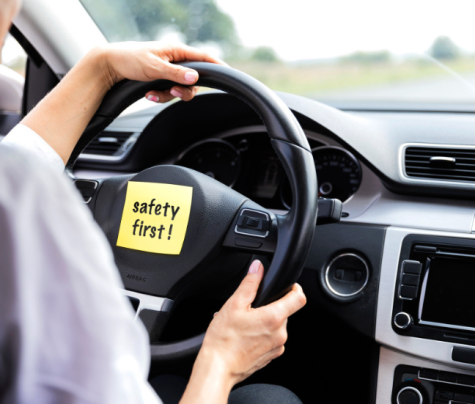
Understanding the recent updates to the Move Over or Slow Down law in Texas is extremely important for anyone who is driving within the state.
In case you didn’t know, right now these changes include utility vehicles! Yes, that’s right. With this addition, it adds another layer of protection for those who work along the roadside.
Additionally, the law incorporates stricter penalties for non-compliance to create safer conditions for law enforcement, emergency responders, and maintenance crews.
This adjustment has enhanced road safety. Additionally, it also serves as an important reminder of the shared responsibility among drivers to be careful and considerate while driving.
The state’s decision to broaden this law reflects a commitment to safety and the protection of all individuals performing duties on or near the roadways.
And that’s not all!
The penalties are now more severe than ever! With this, every motorist must understand the importance of these regulations. Additionally, this will also remind them of the potential consequences of disregarding them.
This expansion underscores the necessity for proactive measures and heightened awareness when approaching any stopped vehicle with flashing lights.
This revised legislation emphasizes the broader effort to reduce traffic-related incidents involving roadside workers.
It’s a step towards ensuring that streets and highways remain safe for everyone—from drivers to those involved in essential work alongside the traffic lanes.
Drivers who get into an accident because of someone’s non-compliance with this law can also seek compensation! they just need to explore legal options with a trusted local advocate.
Hi. In today’s blog, I will be talking about the Move Over or Slow Down Law at depth for people living in or traveling to Texas. So, if that is what you want to know, keep on reading this blog till the end, and thank me later…
What is the Move Over or Slow Down Law in Texas?
First passed in the year 2003, the ‘Move Over or Slow Down’ Law in Texas plays a vital role in ensuring the safety of roadside workers and emergency responders.
It mandates specific actions and speed adjustments for drivers when approaching stopped emergency vehicles, aiming to prevent accidents and enhance road safety.
Origins and Purpose of the Law
Introduced in 2003, the ‘Move Over or Slow Down’ Law in Texas was enacted to address the increasing incidents in the state. These involved stationary emergency vehicles being struck by passing cars.
This law aims to enhance protection for law enforcement officers, tow truck operators, and other roadside personnel. How? Well, by mandating safer driving practices for Texas drivers.
Before its implementation, there were growing concerns about the hazards faced by emergency workers, especially along busy highways.
The legislation was established in response to these risks, thereby aiming to reduce injuries and fatalities.
It serves as a critical step towards ensuring that those who work on or near the road remain secure from passing traffic hazards.
Key Provisions and Requirements
The Texas Transportation Code outlines that motorists must either switch to an adjacent lane or significantly reduce their speed when approaching emergency vehicles.
Specifically, drivers must move over if a lane is available; if not, they must slow to a speed 20 mph below the posted limit.
This applies when emergency lights are flashing, underscoring the urgency of caution in such situations.
Failure to comply may result in fines or more severe penalties if the violation leads to accidents or injuries.
These regulations are crucial for safeguarding both workers and the general driving public by minimizing the risk of roadside collisions. As a result, the law promotes a safer driving environment across Texas.
What Should Drivers Know
The Move Over or Slow Down law in Texas requires a few things when it comes to the drivers.
Firstly, they should be alert and attentive when it comes to approaching any vehicle on the road which are of law enforcement.
Additionally, they should also be careful when crossing utility vehicles, emergency vehicles, and other TxDOT cars that might have flashing lights turned on. When crossing these vehicles, they should move out if the lanes which are closest to them.
Furthermore, the drivers should ensure that they slow down their cars to 20kmph. This is even lower than the speed limit posted on the road.
Always? No, not always. The rivers should do this when they are trying to switch lanes. This makes sure that they are able to minimize the chances of a collision with vehicles.
Besides this, the drivers should also reduce their speed to about 5kmph when the posted speed limit is 25 km h. Yes, you read that right!
Implications and Expansions of the Move Over or Slow Down Law
Recent changes to Texas “Move Over or Slow Down” law have broadened its scope to include more vehicles and increased penalties for non-compliance.
These modifications aim to provide increased protection for roadside workers like first responders and Texas Department of Transportation (TxDOT) employees.
Recent Amendments and Expansions
Extra rules, which the government introduced and effective from September 1, 2023, have now widened their coverage to not only the first responder and TxDOT car but also the utility vehicle.
As per the new law, drivers must either change lanes or lower their speed by 20 mph below the set speed limit while overtaking these vehicles.
Penalty hikes have been put into place to not just penalize irresponsible behavior and improve on-road security. Rather, these also work as a means of stopping such behavior from taking place.
The initial protocol of law enforcement to the area of emergency services was taken over by the amendment to the legislation. This made it the state’s responsibility to ensure its utility vehicles also follow the law, thus the effect of the law has been broadened significantly.
Comprehensive here is to mean the complete attention of all diagnostic instruments available for detecting those workers who are at risk of roadside accidents, and who are at risk of harm from the different road factors as they work on the road.
Enforcement and Compliance Measures
The related services are doing a great job of supporting these smart controls still in place.
To prevent any rule from being broken, the officers are working closely. They are keeping an eye on everything as before. Additionally, they are also conducting checks and monitoring the road to ensure compliance with the new covid measures.
The use of automated tools and fines up to $1,250 as a first-time penalty bring double benefits. And that’s because they transmit a clear message that compliance with the rules is all that matters and that any deviation will be approached severely.
Moreover, the people of Texas have a responsibility to heed the law. And part of this responsibility is the obligation to follow it. Additionally, they must also educate one another through these public campaigns that the state expressly supported.
Impact on First Responders and TxDOT Workers
The legislative expansions offer significant protection improvements for first responders and TxDOT workers.
With safer working environments ensured through stricter regulations, these individuals face reduced risks from passing traffic.
The change in legislation aims to lower instances of roadside injuries and fatalities, contributing to more secure operating conditions.
These improvements not only impact roadside safety. Rather, it also boosts employee morale. And how does it help? Well, TBH, it allows them to perform their duties confidently without unnecessary anxiety over potential roadside hazards.
Read Also:
- Evading Arrest Or Detention: Potential Legal Consequences and Penalties Under the Texas Penal Code
- Relocating Your Business to Texas: Complete Guide on Redomesticating
- A Comprehensive Guide to Amend a Revocable Living Trust in Texas










0 Reply
No comments yet.